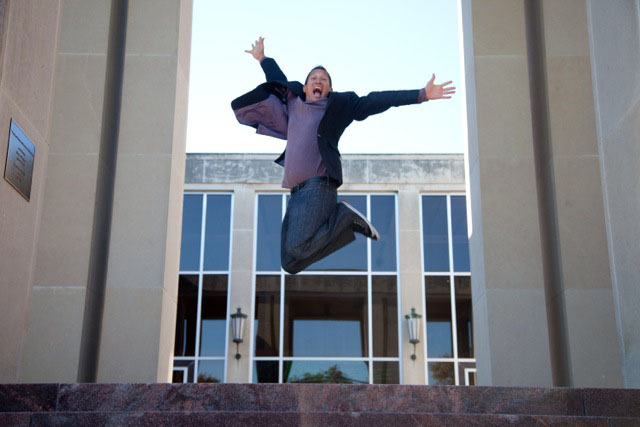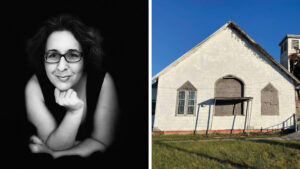By Simone Ellin and Aliza Friedlander
Jews are famously known as the “People of the Book.” Perhaps that explains in part why so many of Baltimore’s leading institutions of higher learning have Jews at the helm.
But like so many other institutions in American society, our centers of higher education have experienced dramatic change in recent years. Technology, tuition hikes, student debt and social policy issues have all contributed to the transformation of American universities and colleges.
Here, we profile some of the finest minds locally in higher education and learn how they help to make Charm City a top-tier college town and a culturally and intellectually stimulating place to live and work.
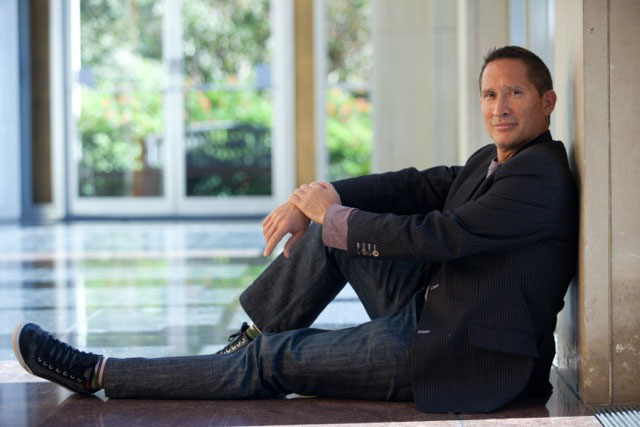
Dr. Jose Antonio Bowen, Goucher College: ‘Intellectual Pushups’
Dressed in jeans and athletic shoes, Dr. Jose Antonio Bowen may not fit many people’s image of a college president. But Dr. Bowen’s casual attire and approachable demeanor are part and parcel of what makes him, and the environment he’s shaped since coming to Goucher College in 2014, somewhat unusual.
For example, Dr. Bowen, 56, who holds four degrees from Stanford University and is an award-winning musician and composer, made national news when arriving on campus and instituting a controversial admission option. Students applying to Goucher have the choice of making a two-minute video instead of sending transcripts, test scores and recommendations for admission.
Now that the policy has been in place for a few years, Dr. Bowen says, “Students who send video applications do just as well” as those applying in the traditional way. “That proves that colleges are in the business of finding potential, and grades and test scores don’t predict potential.”
Goucher’s new admissions requirements come at a time when students and families are concerned about sky-high tuition costs, student debts and vocational readiness.
“It’s a difficult time,” says Dr. Bowen, a native of Woodland, Calif., who is Jewish on his paternal side and Afro-Cuban on his mother’s side. “Marketers tell us that ‘liberal’ and ‘arts’ are both bad words. They’re bad separately and they’re bad together, and we’re not supposed to ever say either one of them. …
“College enrollment is down by 2½ million [since its peak in 2010], and liberal arts colleges make up just 3 percent of the market share,” he says. “We’re at a moment when people want to know there’s a return on their investment. They want to know what to major in.”
But Dr. Bowen maintains that students should choose majors based on their passions, not on their assessments of what appears to be practical. He feels the choice of a particular major does not necessarily dictate career success.
“As it turns out, what students learn is less important than how they learn,” he says. “We can’t train students for the jobs of the future because we don’t know what the jobs of the future will be.”
What Goucher can teach students, says Dr. Bowen, is to be self-directed or “self-regulated” learners whose knowledge bases, opinions and skill sets continue to evolve. “Otherwise,” he says, “you’re just like your phone — an assemblage of content. Your phone is better at memory than you are. Let your phone or your internet be the storage device, but the real smart people are the ones who can change their minds [based on new information].”
Dr. Bowen believes Goucher’s new curriculum — which eliminates distribution requirements and stresses writing, data analytics and complex multidisciplinary, group problem-solving — will prepare students for the future. Goucher also requires all students to study abroad to build “cultural competence.”
These proficiencies, says Dr. Bowen, are “the key skills that employers want.”
Instead of being conveyors of content, Dr. Bowen says today’s most successful instructors are more like coaches who view teaching as a “design problem.”
“The best analogy is [to being] a fitness coach,” he says. “The best coach is not the one who does the most pushups. It’s the one who designs a situation that gets the students to do the most pushups. It’s the same with intellectual pushups. The best teacher isn’t the one who’s won a Nobel Prize. It’s the one who designs the best setup for students to do the most intellectual work. … We need to be cognitive coaches who help students learn to focus and change their minds.”
— Simone Ellin
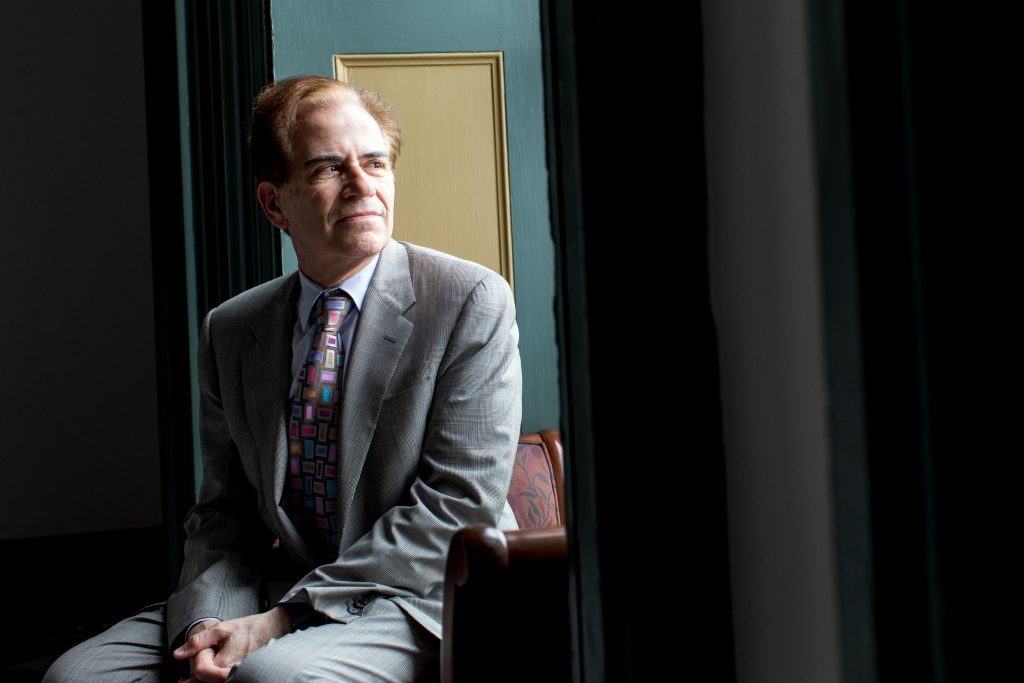
Dean Fred Bronstein, Peabody Institute: ‘Silos Are Breaking Down’
Dean Fred Bronstein knows firsthand the time and level of commitment required to become a professional musician. A classically trained pianist and former chief executive of several American symphony orchestras, he serves as dean of the Peabody Institute of the Johns Hopkins University.
But he also recognizes the importance of providing musicians with the instruments, if you will, needed to thrive in an evolving global musical landscape.
“What I learned working in the world of orchestras is how quickly the field of music is changing and the challenges musicians are facing,” says Dean Bronstein. “I’ve always been interested in education, particularly in how we think about preparing future musicians for a world that is different than the one I grew up in.”
A Boston native and self-described cultural Jew, Dean Bronstein, 61,became the Peabody’s first dean in 2014 after a six-year stint as president and CEO of the St. Louis Symphony.
“What more interesting place [is there] to be if you want to be on the frontier?” he says of the 161-year-old conservatory in Mount Vernon. “At Peabody, we are willing to experiment and develop programs that will address issues for future artists.”
Dean Bronstein’s five-year “Breakthrough Plan” is such a program. Geared toward teaching students how to “be effective in all kinds of performances,” the plan rests on five pillars — excellence, interdisciplinary experiences, innovation, community connectivity and diversity.
“To get good at what you do, musicians are taught to be focused on their instrument,” says Dean Bronstein, a graduate of Boston University, the Manhattan School of Music and the State University of New York at Stony Brook. “At Peabody, we aren’t saying students should spend less time on their art but are acknowledging other ideas. This is a big culture and mindset change, and becomes a competitive advantage of the school.”
To incorporate the five pillars, Peabody is creating cross-disciplinary programs, including the newly established Johns Hopkins Center for Music and Medicine, and has just opened a health care clinic and wellness center on campus. To promote community connectivity, all concerts are free to the public to “provide a sense there are no barriers to coming into Peabody.”
Dean Bronstein admits the school’s most significant challenge is attracting a diverse faculty and student body. For the 2018-2019 academic year, 28 percent of Peabody’s 40 new faculty members and 38 of the school’s incoming students are from under-represented populations. That’s up from 25 minority students enrolled last year. To boot, Dean Bronstein says, Peabody has seen a 58 percent increase in applications from minority students.
“Ideally, we would like this number to be higher, but it isn’t something that’s going to be solved in five or 10 years because it’s about generations of access and historic exclusion,” he says.
Dean Bronstein has created a diversity task force on campus to respond to the issue from all angles, including admissions, campus climate and recruitment.
“Historically, classical music has not been a diverse place,” he says. “If you go to any major orchestra, you see few musicians of color, and music schools bear an element of responsibility. As the world of music becomes more competitive, the notion of a diverse audience becomes critical. But you can’t build a diverse audience without building a diverse set of musicians.”
Still, Dean Bronstein believes “musical silos are breaking down.”
“Kendrick Lamar winning the Pulitzer Prize for hip-hop acknowledges the complexity and importance of particular art forms,” he says. “Our musicians at Peabody are getting exposed to all cross genres and have a working knowledge of the breadth of all musical expression that exists.”
While embracing change, Dean Bronstein believes Peabody’s stature as the nation’s oldest music conservatory provides the ideal foundation for the school’s ongoing evolution.
“Peabody wasn’t founded as a music school but rather as a cultural center in Baltimore,” he says, “and we are coming back to the spirit in which this place was founded.”
— Aliza Friedlander
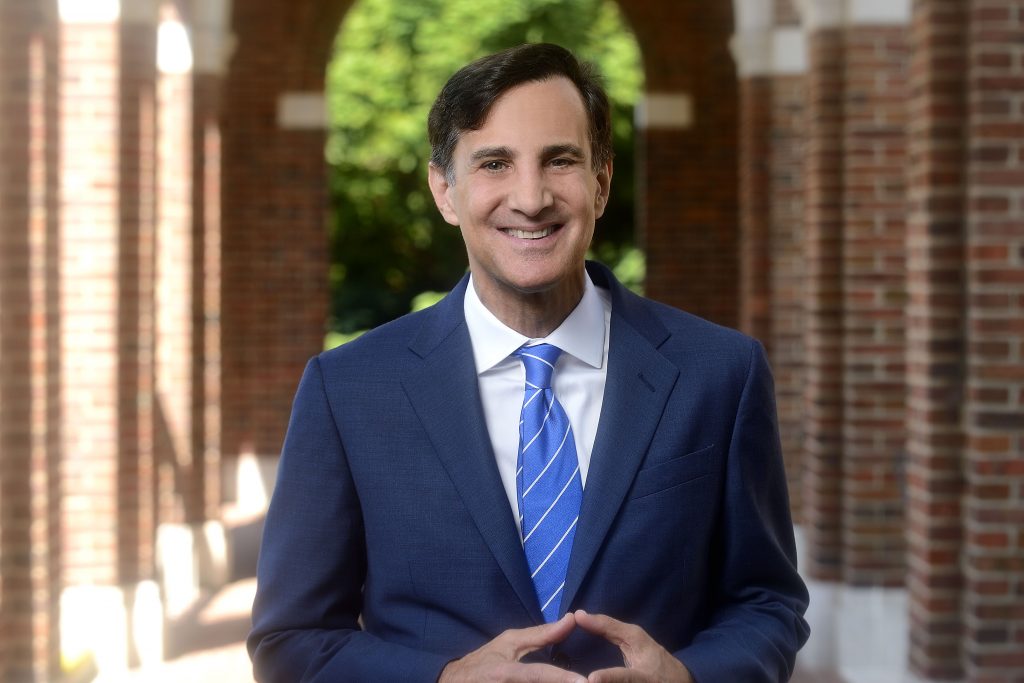
President Ronald J. Daniels, Johns Hopkins University: ‘Meaningful and Lasting Opportunities’
Ronald J. Daniels recognizes the deep impact that higher education has had on his life. The president of Johns Hopkins University for the past nine years, President Daniels, in his 2018 commencement speech, acknowledged that a university education wasn’t always a sure bet for him because of his background.
“My family’s path to a university education was not straightforward nor was it assured,” President Daniels, 59, told the graduating class. “My father came to Canada as a 7-year-old boy with his parents and two older siblings. They arrived from Warsaw, Poland, as Jewish refugees in March 1939, just months before Hitler invaded the country.”
President Daniels continued to tell his family’s story, including the fact that his father’s entire extended family, as well as members of his wife’s family, perished in the Holocaust.
“For my father,” he said, “the motivating force in his life was trying to make sense of this good fortune in escaping to Canada on the eve of the Holocaust, becoming educated, and having such a full and meaningful life.”
Due to scheduling conflicts, President Daniels was unable to speak with Jmore for this article.
Prior to coming to Hopkins, President Daniels was the provost and vice president at the University of Pennsylvania and dean of the faculty of law at the University of Toronto.
A Toronto native, President Daniels received both his bachelor’s and law degrees from the University of Toronto.
As the 14th president of Hopkins, he has focused on enhancing interdisciplinary collaboration, individual excellence and community engagement. It’s that commitment to community that has led President Daniels to help create the HopkinsLocal initiative; the goal of the program is to assist in creating long-lasting economic opportunities in Baltimore.
“We launched HopkinsLocal to do more to build, hire and buy locally, creating meaningful and lasting opportunities for residents and businesses in our city,” President Daniels told The Hub, Johns Hopkins University’s news center, in May. “The progress made in our second year helps to demonstrate the foundational commitment beneath our goals.”
HopkinsLocal launched three years ago. By the end of fiscal year 2017, the university had committed $61.3 million of its construction budget to women-owned, minority-owned or disadvantaged businesses, according to a recent progress report.
In addition to HopkinsLocal, President Daniels has worked on revitalizing the neighborhoods surrounding Hopkins’ Homewood campus and is working with state lawmakers on a bill to create a private police department for the university. The proposal came after a handful of armed robberies at the Homewood campus.
“The safety of our campus communities is a matter of utmost concern,” President Daniels wrote in a statement in March along with Johns Hopkins Medicine CEO Dr. Paul Rothman. “We see this as a critical opportunity not only to strengthen public safety in and around our campuses but also to build a model university police department that focuses specifically on the needs of our community and reflects contemporary best practices at universities with academic medical centers.”
With a contract that goes through 2024, President Daniels is looking toward the future while calling on Hopkins graduates to help make the world a kinder place.
“Be the kinds of citizens who will identify the mental fences that hold us back from extending opportunity to people who seek only the fair chance to build lives of decency and meaning,” he said, speaking to the class of 2018 in his commencement speech. “Be among those — like your commencement speaker today — who are determined, committed and resolute about tearing those fences down.”
—A.F.
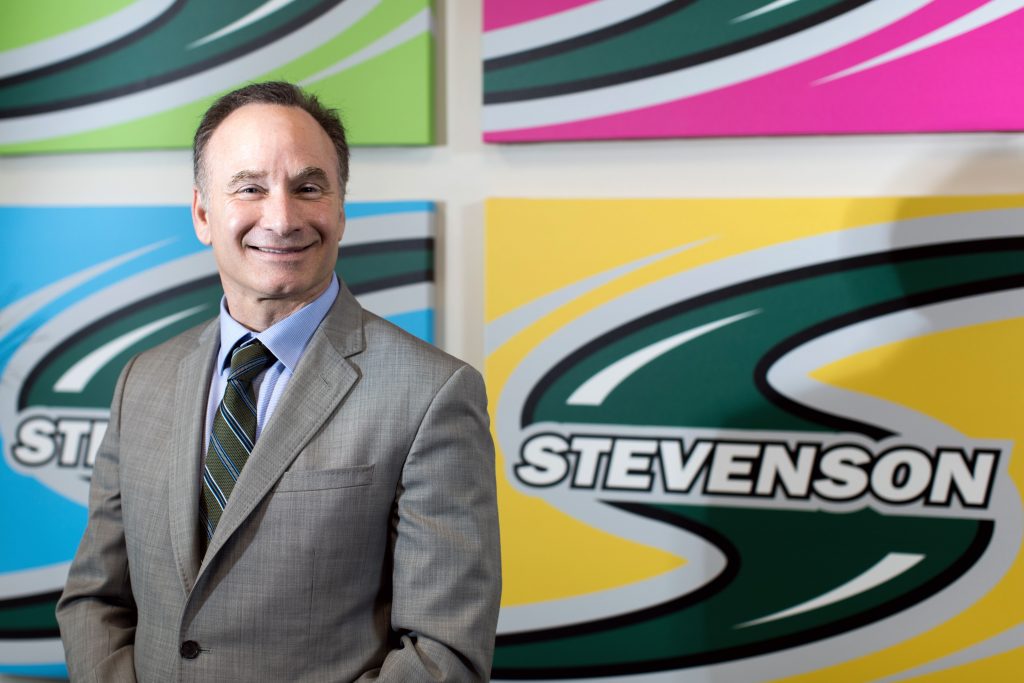
Dr. Elliot Hirshman, Stevenson University: ‘A Change of Consciousness’
Though becoming president of Stevenson University just last July, Dr. Elliot Hirshman is no stranger to the Baltimore-Washington corridor.
The former provost and senior vice president of academic affairs at the University of Maryland, Baltimore County, and chief research officer at George Washington University, Dr. Hirshman says he’s thrilled to be back in the area and working at a college that’s growing at an exponential rate.
“What is so exciting about Stevenson University is the great foundation,” says Dr. Hirshman, 57, who served as president of San Diego State University for six years before coming to Stevenson. “That foundation presented the opportunity to continue to develop a campus, and if you look around higher education, that’s not a common opportunity.”
In June 2017, Stevenson acquired the 117-acre Rosewood Center property in Owings Mills. The acquisition of Rosewood, a former mental health facility located next to Stevenson’s existing Owings Mills campuses, almost doubles the university’s total acreage. (Stevenson also has a campus in Greenspring Valley.)
“We have over 100 acres of land to develop athletic fields and facilities, or to create new programs for the university,” says Dr. Hirshman. “It’s about seeing that vista and those possibilities.”
Dr. Hirshman says demolition of Rosewood’s buildings is now complete and the university is preparing the grounds for the installation of multi-purpose athletic fields. After that, he says, “The sky is the limit.”
The school also plans to create a track, hockey rink and field houses. Dr. Hirshman also would like to add walking and biking paths for students and community members. He notes the latter are quite pleased to see that change is coming to the neighborhood.
“This was not an attractive area previously,” he says. “So they are excited to see even the demolition moving forward. There is also going to be environmental remediation associated with [the acquisition], which is a positive.”
Dr. Hirshman is the seventh president of Stevenson, formerly known as Villa Julie College. With more than 4,100 students, the university is the third largest private college in Maryland.
“We really pride ourselves in being a friendly, supportive community,” says Dr. Hirshman, who earned his bachelor’s degree from Yale University and his doctorate in cognitive psychology from the University of California, Los Angeles. “We want to be a place where people can receive individual attention. We often say we meet students where they are, so it’s really thinking of each student as an individual and helping them grow and develop.”
Preparing students for post-college life is one of Dr. Hirshman’s primary goals.
“Ninety-two percent of Stevenson University students have a job or are in graduate school within six months of graduating,” says Dr. Hirshman.
Yet Stevenson also offers students opportunities to express and enjoy themselves, and to tackle some important social issues through the university’s clubs and organizations. For example, a student group called R.I.S.E. (standing for reach out, inspire, strengthen and empower) sponsored a recent event called “Walk of No Shame” to raise awareness about sexual assault.
“It’s exciting for me to see students implementing change,” says Dr. Hirshman. “There is a high level of sophistication in that many of them realize some things can be addressed through legislation and policymaking, but other things need to be addressed through a change of consciousness. …
“We are in a moment where we are learning to live in a pluralistic society with a greater awareness of all cultural perspectives. What we have to do on campuses is have an openness to discussion and perspectives, and then when we disagree, listen respectfully and share our views.”
A Beth El congregant, Dr. Hirshman says his Jewish background played an important role in his development as a university president.
“I’ve always had a strong connection to Judaism, both theologically and culturally,” he says. “It’s something that incorporates a system of ethics and precepts. It influences value judgment and lenses in which I see issues. I feel very fortunate that Stevenson University is living what I envisioned.”
— A.F.
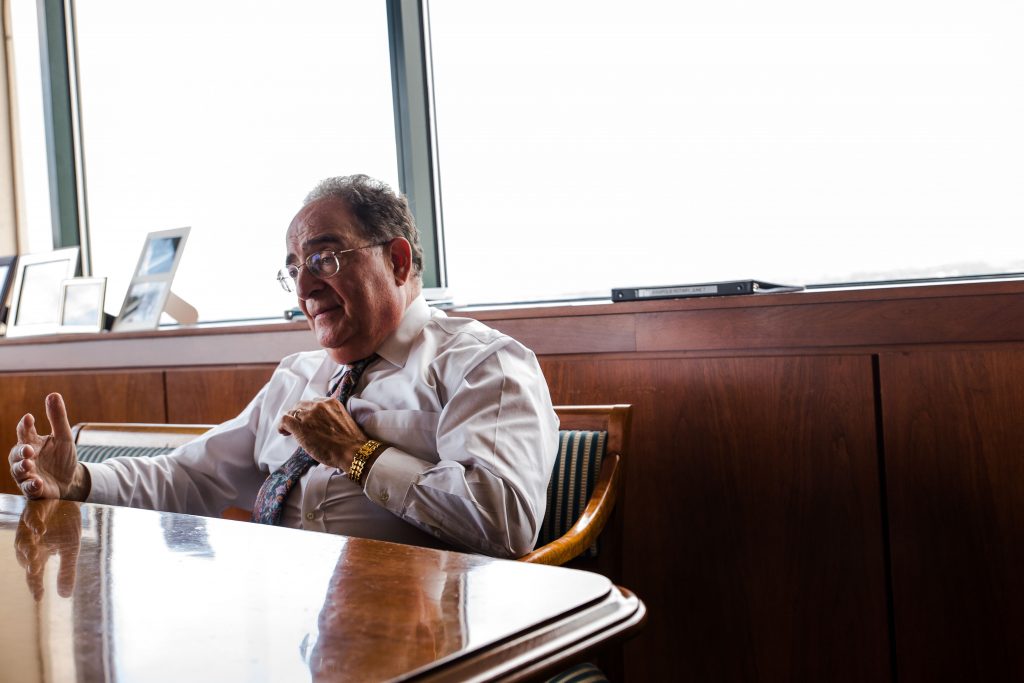
Dr. Jay A. Perman, University of Maryland, Baltimore: ‘Full Circle’
There was a time when Dr. Jay A. Perman, president of the University of Maryland, Baltimore, considered becoming a rabbi.
“I grew up in Chicago in an Orthodox-Conservative Jewish family,” he says. “One day, a bunch of rabbis from the yeshiva came to my mother – she was a widow by then — and said, ‘Your son is a good student, he has Yiddishkeit. We’d like to pay for him to go to Hebrew high school and become a rabbi.’ I had always wanted to be a doctor, but we talked and thought about it a lot, whether to become a doctor or a rabbi.”
Ultimately, Dr. Perman, 71, a pediatric gastroenterologist and Har Sinai congregant, chose medicine. But sometimes he feels like he’s “come full circle.”
Through his work treating patients, training graduate students (many of whom are in the helping professions) and advocating for residents in the West Baltimore neighborhood surrounding the university’s campus, Dr. Perman says he “gets to be like a rabbi by performing acts of tikkun olam [repairing the world].”
Dr. Perman, who became president of UMB in 2010, takes pride in the university’s highly ranked professional schools in medicine, nursing, social work, dentistry, law and pharmacy, as well as an interdisciplinary graduate school.
“We are research-intensive but best known as the state’s principal producer of people with professional degrees in human services,” he says.
Despite his formidable administrative responsibilities, Dr. Perman continues to practice medicine in his weekly President’s Clinic, where he treats young patients from the neighborhood and trains students from UMB’s six professional schools to provide multi-disciplinary services to patients and their families. Students receive additional training in providing team-based treatment at the Center for Interprofessional Education, which he started in 2013.
“We teach students to work as a team and to understand the social determinants of health,” says Dr. Perman, referring to the economic, domestic, nutritional and environmental conditions under which patients live.
Dr. Perman’s concern with the social determinants of health go beyond his work with patients and students in the President’s Clinic. In 2014, he established the Office of Community Engagement to respond efficiently to critical issues in the community. The following year, he opened the UMB Community Engagement Center in West Baltimore. The center provides area residents with health care, vocational training and referrals, legal, financial, and social services delivered by graduate students and staff.
Dr. Perman says the center gives people in the neighborhood an opportunity to access services without visiting the campus, which can seem impersonal and overwhelming. The center has been well-received, serving “2,000 unique individuals a year” since opening. In fact, says Dr. Perman, “We’ve outgrown the space and are now raising money to acquire and renovate an old building that’s seven times as large.”
Another pet project of Dr. Perman’s is his UMB CURE Scholars Program for middle school students, which just completed its third year. The program currently serves sixth-, seventh- and eighth-grade students from three West Baltimore middle schools who demonstrate an interest in science and exposes them to STEM careers, while providing mentoring and experiential learning. The program, which will extend into the scholars’ high school years, was conceived as a response to the shortage of African-Americans in STEM fields and the health disparities that arise from the shortage.
“It’s not just a matter of social justice,” Dr. Perman says. “[Studies show] when you’re cared for by someone from your own background, you have a better outcome. We need people to find out why that is, but minority scientists are the ones [most likely] to do that work, and we don’t have enough of them.”
Though many so-called “pipeline” programs have failed, Dr. Perman is optimistic about UMB CURE, in part because it engages students early. In fact, UMB’s CURE Scholars are the youngest ever to participate in the National Cancer Institute’s Continuing Umbrella of Research Experiences (CURE) national program.
“We have seen improvements in students’ math and reading, and the retention rate — especially for poor kids who live in stressful environments — is extraordinarily high,” he says. “I hope I’m still around to see the first of these kids walk across the medical school stage.”
See video of a recent naturalization ceremony for new Americans hosted by Dr. Perman here.
— S.E.

